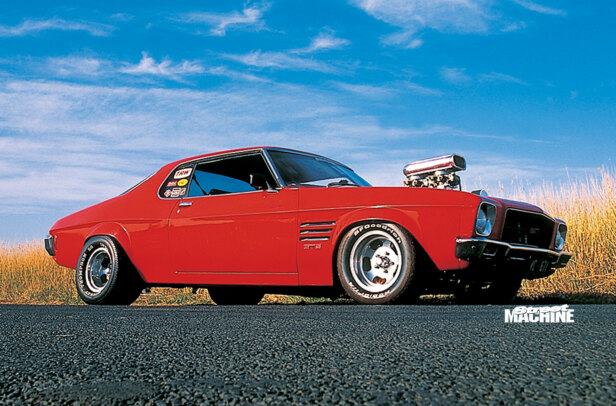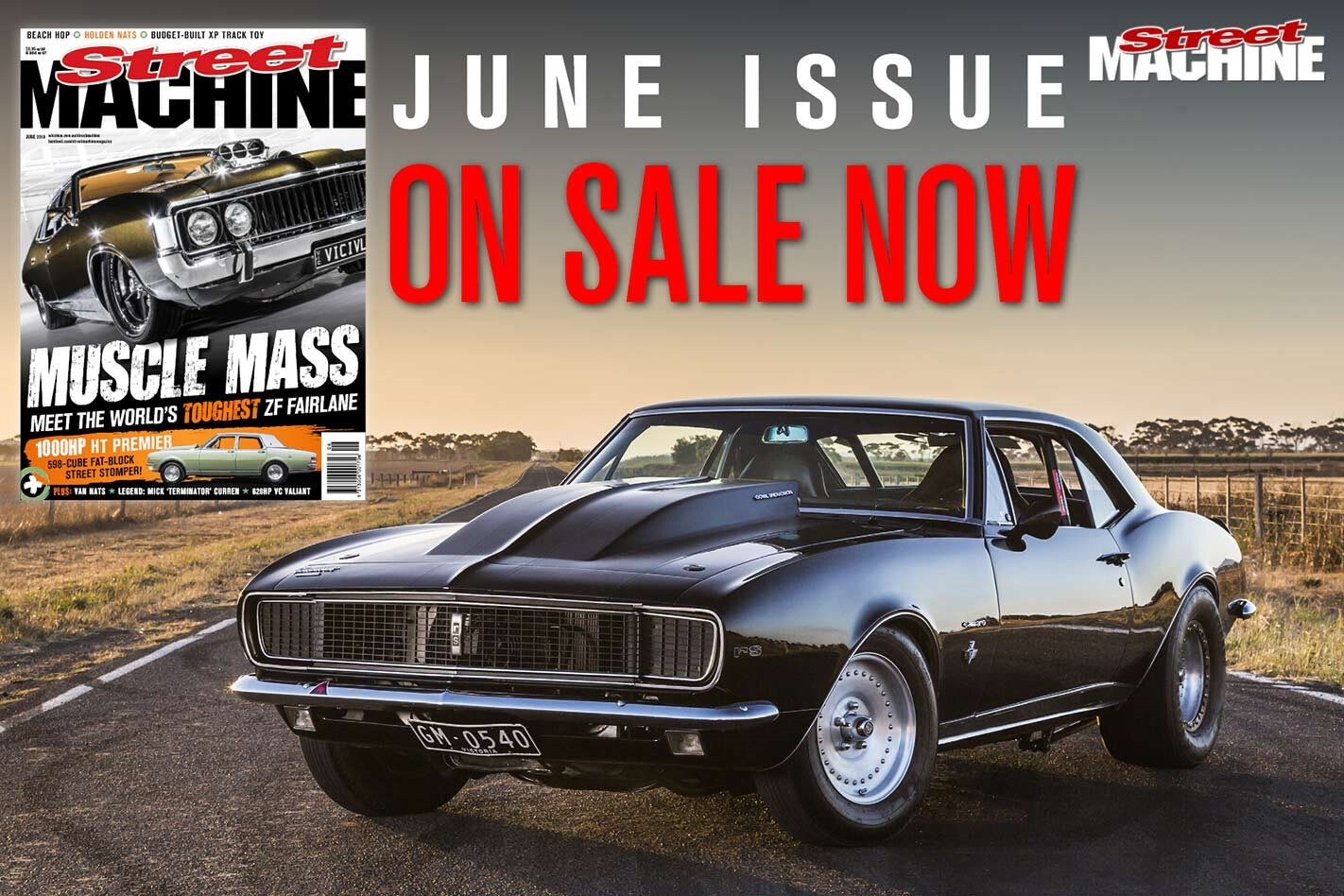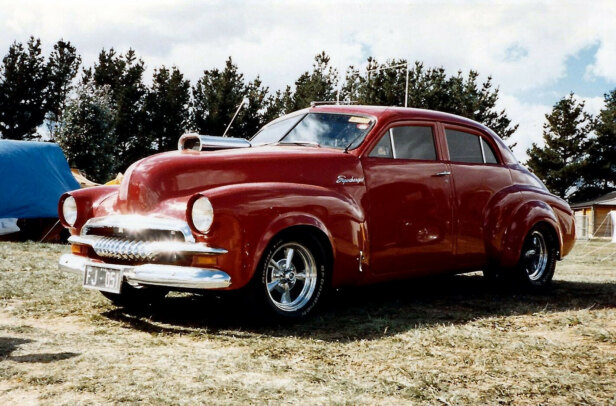THERE are a few key factors necessary for a tough car build: Stance, power, wheels, colour – actually, let’s nutshell this in one word: presence. Nail all of these elements and your street presence will be a given. Get one or more wrong and it can leave your pride and joy looking ‘meh’.
This article was first published in the June 2019 issue of Street Machine
But if there was ever a poster child for the perfect hot-car build with timeless presence, it would be Mick Curren’s HQ GTS Monaro (SM, Apr-May ’86), forever remembered as The Terminator.
Were you always just a ‘natural’ car guy, or were there experiences that pointed you down this path?
A few things got me into cars. An early memory was being in awe as I watched my dad change a clutch in an XM Falcon up on ramps in the backyard; I was about 11 years old and the whole process amazed me. A few years later I had some older mates who leased a factory we appropriately called ‘The Shed’, where they would do their cars up. It was a great atmosphere and I was intrigued with how they lowered suspensions and put mags on, and watched them hot engines up and switch out six-cylinders for V8s. This led to a fascination with cars and was a catalyst for the skills I have now.
An L34-spec 308 was topped with a Fisher blower to satisfy Mick’s horsepower cravings, and was lavished to the max in extensive chrome-plating and paint detailing – those chromed inner guards are to die for! A nice dash of rake was matched by fat US Racer rims and a mix of BFGoodrich and Mickey Thompson rubber, which perfectly complemented the beauty of the red and chrome
The 1970s and 80s were an awesome time in our car history. Were there any cars you remember in magazines or locally that left their mark or helped shape your own projects?
Not really, there were no specific cars that I obsessed over or was inspired by; I just had my own clear ideas about what I liked. I seemed to have a talent for knowing what to change or modify to make a car look ‘tough-as’, and loved the challenge of applying this while flirting on the edge with the police and transport authorities [laughs].
How did The Terminator name come about? Was the Schwarzenegger character from the ’84 film on your mind as the HQ was being built?
It was all you guys! Street Machine named the car as part of the cover feature and it just stuck. The movie was fairly new at the time, and I was heavily involved in the gym and bodybuilding scene then as well, so that name ticked all of the boxes.
The flared guards of Mick’s build perfectly complemented the already curvy HQ two-door body. “Many people had attempted flared guards before, but often spoil the natural flow of a car,” Mick says. “However, as beautiful as the lines are of a standard Monaro, somehow we managed to enhance them”
Was the supercharger always part of the plan, or was it added as time progressed?
It evolved with the build fairly naturally. It started with a single four-barrel, then on to a tunnel-ram. But I always loved the look and sound of a blower whining down the road, vision obscured with it hanging out of the bonnet as high as it could be. It was like seeing the heart of my machine – a pulsating chest [laughs]. It’s just the toughest look you can get.
Would you ever consider building a modern-day ‘Terminator 2’? And is there anything you would go back and change on the original build?
In its day, The Terminator was a beast, and since then, adaptations of that concept have produced even tougher cars because of the technologies available to the average car enthusiast now. I think the hardest part these days would be actually finding an HQ Monaro to start the build with, but if I had my time over I would still do it the
same.
It must be an unusual feeling to know that, even three decades later, your Monaro is still talked about and remembered with such passion and fondness. Does that feel a bit surreal?
It was 33 years ago that it appeared on the cover, so yes, I am very surprised by the interest my Monaro still holds. Although in some ways I can understand it; at its core, it was such an iconic model, being a GTS two-door; they’ve always been popular. It resonated with so many people at the time because although it was a street car, it had everything in the build that a pro street car should have: extra wide tyres, it sat exceptionally low, it was supercharged and had wheelie bars. Stuff that was unheard of for a streeter in the mid-80s. I never get tired of reminiscing or reflecting on any humbling recognition for any car that I have built, because I am proud of what I have done and what I am still able to do.
Mick’s 1965 C10 truck was bought out of Perth four years ago, and the use of red and white throughout gives it a timeless look that attracts plenty of admirers
Is there any particular make or style of build you prefer?
I don’t particularly have a preference in the type of car I build; I’m neither a traditional Ford nor Chev man. My current projects are a 1965 Chevy C10 pick-up and a 1965 Mustang fastback, two cars at the opposite ends of the spectrum but which both fill my only unofficial criterium, in that I build mainly two-door type vehicles. Even if the Chevy fits that by default [laughs].
A four-bolt 350 Chev and Turbo 400 driveline, combined with a decent drop in ride height, make Mick’s C10 the perfect cruiser
Do you miss the pioneering years of street machining in Australia? It was such a hive of activity that produced so many memorable cars.
I miss it all; once cars are in your blood, you are hooked! The early years of street machining paved the way for how great the scene is now – it created a paradise where car builders can build any type of car they want, whether it be a pro streeter, pro touring or even a sleeper-type build.
Mick’s gorgeous ’65 Mustang fastback is being built along pro touring lines, balancing a restrained exterior presence with plenty of attitude where it counts. Those stunning wheels are custom-made 18×8 and 19×11 Rushforth Rated X items, housing Baer six-pot calipers and 14in rotors at each corner
So what’s the current state of play with your Chevy and Mustang? They’re both looking the goods!
The Chevy is pretty much done and is just driven and enjoyed. My Mustang is not far from being completed; I just need to run the electrics, install the fuel lines and fit the exhaust. The plan for this build was always along the pro touring theme that wasn’t so much in-your-face visually, but has the goods underneath.
The Mustang’s 550hp stroker 347 Windsor features Eagle internals along with a Crane solid-roller cam, all topped with CNC-ported AFR heads. Trans is a full-manual, reverse-pattern C4
If I gave you open slather and a money tree to build your ultimate car, what do you think you would choose?
Wow, I’m not sure what car I would build! It would certainly be some sort of muscle car from the 60s or even 70s. I think it would be along the lines of a Ringbrothers build from the States, where they widen a car and use carbonfibre on the body. It would definitely use a custom chassis and would most certainly have a blower! Some old habits die very hard [laughs]!




Comments